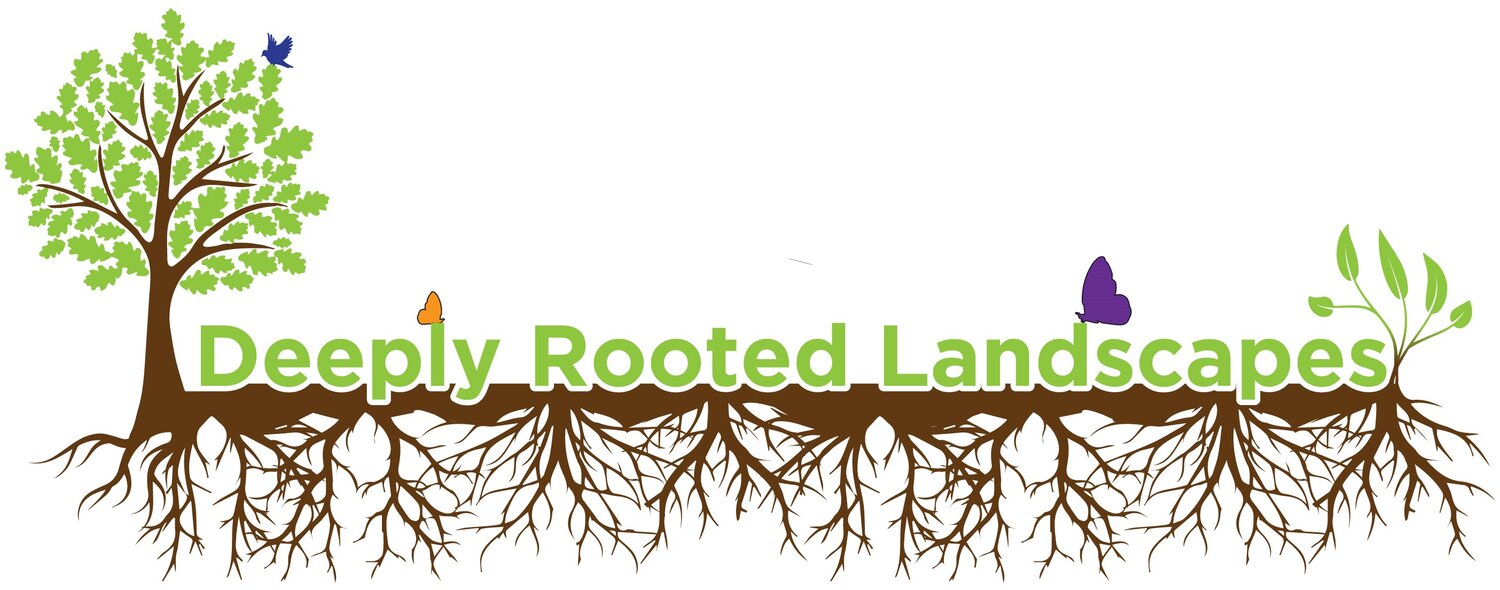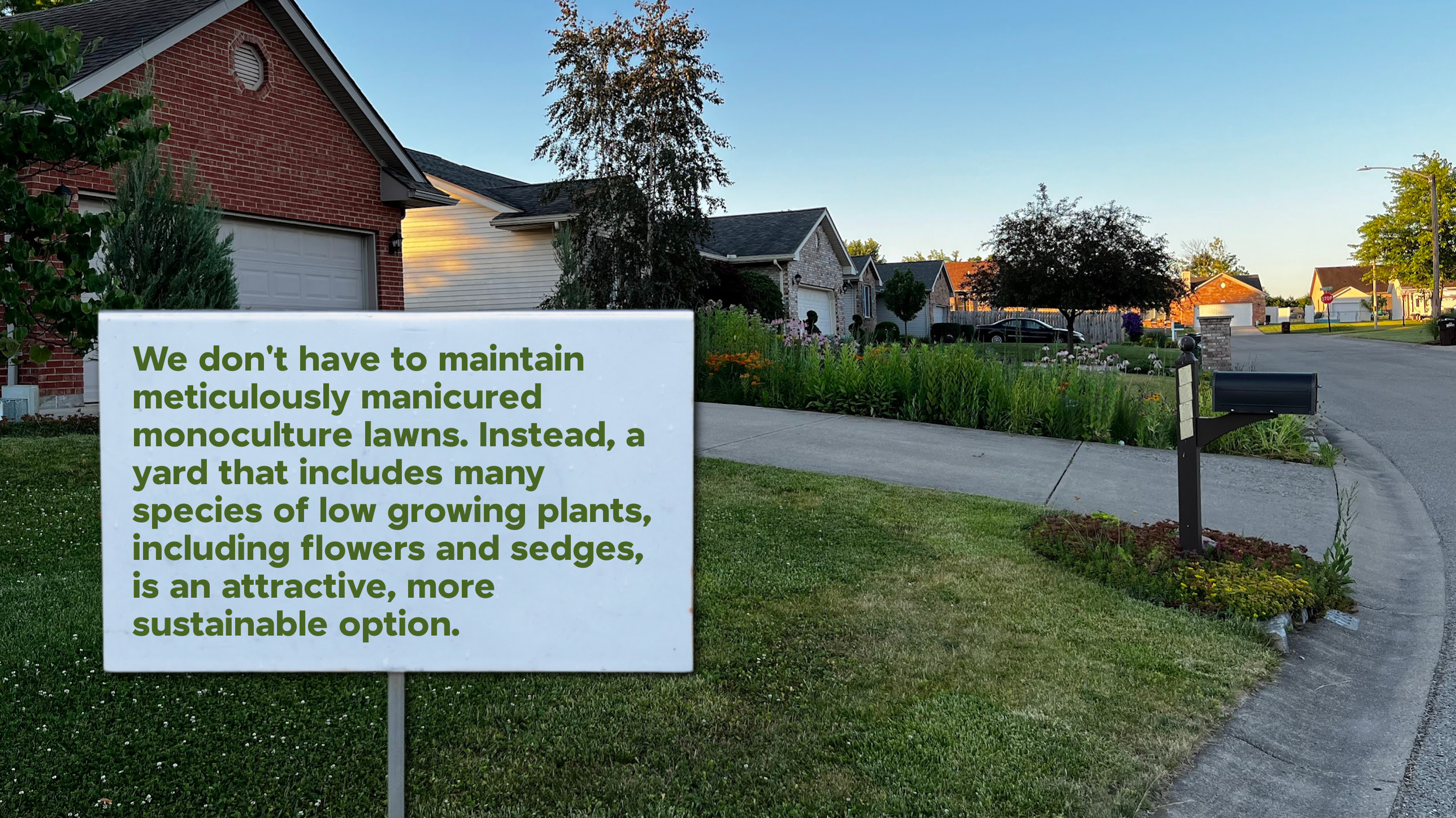Rethinking Lawns: A Guide to Sustainable and Beautiful Alternatives
Lawns have been a traditional feature of American homes for decades, but their environmental costs and limited benefits lead many to reconsider this staple of suburban landscapes. Traditional lawns demand substantial resources and contribute to various environmental issues, making it crucial to explore more sustainable alternatives. Let’s look at why it might be time to rethink your lawn. We’ll also consider options like reducing the size of your lawn or converting your existing lawn to a sedge lawn, quilt lawn, or a low/no mow option.
The Hidden Costs of Traditional Lawns
Maintaining a traditional lawn involves considerable time, water, and chemicals. The financial commitment is significant, with pesticide sales totaling approximately $9.3 billion annually and the broader landscaping industry surpassing $35 billion in sales. However, this comes at a cost to both the environment and human health.
Resource-Intensive Maintenance
Lawns require frequent watering, the application of herbicides, pesticides, fertilizers, and regular mowing, all of which contribute to resource depletion and environmental pollution. The lawnmower emissions and the chemical runoff from fertilizers further exacerbate the issue.
Health Risks
The chemicals used in lawn care are associated with various health issues, including cancer, congenital disabilities, and organ damage. Vulnerable groups such as children, pregnant women, and older adults are particularly at risk. Pets are also affected by these harmful chemicals.
Impact on Wildlife
The environmental impact extends to local wildlife as well. Many common lawn pesticides are toxic to birds, fish, and bees, disrupting local ecosystems and contributing to the decline of beneficial species.
Read more about the harmful impact of traditional lawns here:
Maintaining A Conventional Lawn With Less Harm
We don't have to maintain meticulously manicured monoculture lawns. Instead, a lawn area can include many species of plants, from clovers to violets, dandelions, plantains, sedges, and more. This creates an attractive, more sustainable option.
A diverse lawn will need less water and stay green through summer's hottest and driest parts, which saves you time and money.
Letting dandelions and clover stay in your lawn will reduce exposure to chemicals linked to cancer, congenital disability, organ damage, and more, keeping you and your family safer.
A lawn planted with small flowers will provide beauty and food to countless insect species, which will, in turn, feed birds and small mammals—the circle of life!
Manicured lawns are boring! There are much better, more beautiful, and exciting ways to maintain your landscape while providing habitat for wildlife.
Another way to reduce the harmful impact of a traditional lawn is to have less lawn. Create more extensive foundation beds around your house, plant new flower beds around the trees in your yard, and add a vegetable garden patch. Look at your lawn as an accent to the rest of your garden or the pathways to get you from different areas of your yard. A lawn does not have to fill your entire outdoor space.
Exploring Sustainable Alternatives
Fortunately, several sustainable and aesthetically pleasing alternatives to traditional lawns exist that can reduce resource use and support local wildlife.
Sedge Lawn
Sedges are perennial plants related to grasses and look very similar. Planting a lawn with short sedges instead of grasses can recreate the look of a conventional lawn without all of the resources required by traditional turfgrass lawns. As an added benefit, you can choose sedges native to your area to provide habitat for wildlife.
The Mt. Cuba Center in Delaware recently completed a four-year trial on 70 different Carex sedge species and cultivars, growing them in shade and sun in average soil conditions. During the final year of the trial, they assessed the sedges as lawn substitutes by mowing them every two weeks.
To plant a sedge lawn, the existing lawn must be removed, and then the sedges should be planted as live plants. Seed is not recommended, as the Carex genus has uneven germination rates.
Sedges for a sedge lawn:
Appalachian Sedge (Carex appalachica)
Common Wood Sedge (Carex blanda)
Fibrousroot Sedge (Carex communis)
Ivory Sedge (Carex eburnea)
James' Sedge (Carex jamesii)
Pennslyvania Sedge (Carex pensylvanica)
Eastern Star Sedge (Carex radiata)
Curly-styled Wood Sedge (Carex rosea)
Low Woodland Sedge (Carex socialis)
Wood’s Sedge (Carex woodii)
For more information on sedge lawns, check out the following resources:
Carex for the Mid-Atlantic Region | Mt. Cuba Center
Native Sedges – Shady Lawn Replacement, Mulch Substitute, and More | Edge of the Woods Nursery
Sedge Lawn Substitute: Tips For Growing Native Sedge Lawns | Gardening Know How
Sedge Lawns: A Sustainable, Low-Maintenance Alternative to Grass | Brooklyn Botanic Garden
Sedge Meadow Garden Examples | Prairie Up
Quilt Lawns
Quilt lawns, also known as tapestry lawns, are a versatile option that combines a variety of low-growing plants, including flowers and grasses. Depending on the chosen plants, these lawns can handle some foot traffic and may or may not require mowing. Quilt lawns are a more ecological, lower-maintenance option than traditional lawns and provide habitat and beauty.
Flowering plants for a quilt lawn:
Green and Gold (Chrysogonum virginianum)
Wild Strawberry (Fragaria virginiana)
Meehan's Mint (Meehania cordata)
Bay Forget Me Not (Myosotis laxa)
Golden Ragwort (Packera aurea)
Self Heal (Prunella vulgaris)
Wild Stonecrop (Sedum ternatum)
Foam Flower (Tiarella cordifolia)
Lance Leaf Violet (Viola lanceolata)
Common Blue Violet (Viola sororia)
Cream Violet (Viola striata)
Barren Strawberry (Waldsteinia fragarioides)
Sedges for a quilt lawn:
Creek Sedge (Carex amphibola)
Common Wood Sedge (Carex blanda)
Ivory Sedge (Carex eburnea)
Plantain Sedge (Carex plantaginea)
Star Sedge (Carex radiata)
Curly Styled Wood Sedge (Carex rosea)
For more information on quilt lawns, check out these resources:
Quilt Lawns: Welcoming nature into your backyard | The McEwan Laboratory
Tapestry Lawns: Why You Need This Low-Maintenance Grass Alternative | Architectural Digest
Tapestry lawns – what are they, and should you have one in your backyard? | Home & Gardens
Low/No Mow Lawns
Low and no-mow lawns are drought-tolerant mixes of non-native fescue grasses designed to minimize maintenance while providing ecological benefits. These alternatives use specially selected plant species that require less frequent mowing and can thrive in various conditions.
Prairie Nursery offers a No Mow Lawn seed mix, and Prairie Moon Nursery also has an Eco-Grass blend. Both would be excellent choices for creating a low-maintenance, environmentally-friendly yard.
For more information on low or no-mow lawns, check out these resources:
Are Low-Mow Grasses the Way to Go? | Fine Gardening
Homeowner’s Guide To No Mow Grass | Family Handyman
What Is No-Mow Grass? (Hint: It’s Not Artificial Turf) | Bob Vila
Rethinking your lawn and embracing alternatives like a sedge lawn, quilt lawn, or low/no mow lawn can lead to a more sustainable, beautiful, and environmentally friendly landscape. By reducing resource use, minimizing chemical exposure, and supporting local wildlife, you can transform your yard into a vibrant ecosystem that benefits both people and nature.
Are you interested in reducing or removing your lawn but don’t know where to start? Deeply Rooted Landscapes can help! To get started, schedule a garden consultation with us or email Courtney@deeplyrootedlandscapes.com.











